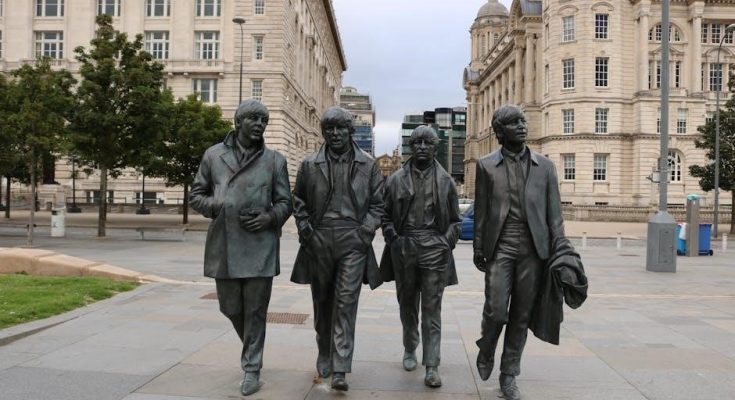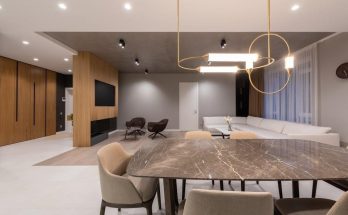Embark on a self-guided journey through Miami Beach’s iconic Art Deco District, exploring its vibrant architectural heritage at your own pace․ Discover the enchanting beauty and cultural significance of this historic neighborhood, renowned for its striking buildings and retro charm․
Overview of the Art Deco District in Miami Beach
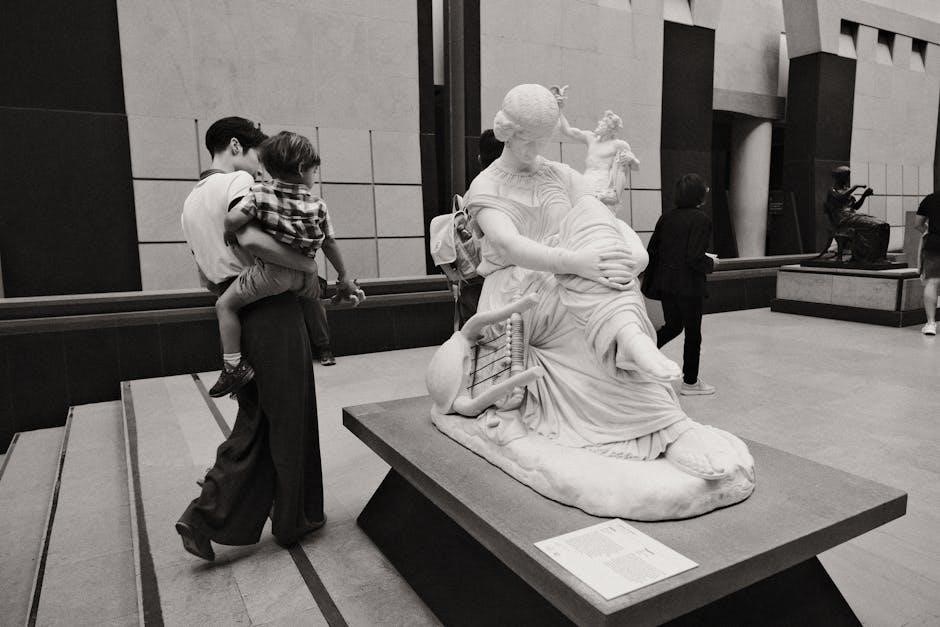
The Art Deco District in Miami Beach is a vibrant neighborhood showcasing over 800 preserved buildings from the 1920s to the 1940s․ Known for its pastel-colored facades, geometric patterns, and nautical motifs, the area is a treasure trove of architectural elegance․ As a National Historic Landmark, it attracts design enthusiasts and casual visitors alike․ The district’s retro charm, combined with its tropical setting, creates a unique and photogenic environment․ Whether strolling along Ocean Drive or exploring quieter streets, the Art Deco District offers a captivating glimpse into Miami’s rich cultural and architectural heritage․
Why Choose a Self-Guided Tour?
A self-guided tour offers the freedom to explore Miami Beach’s Art Deco District at your own pace, allowing you to linger at buildings that captivate you or take breaks whenever desired․ Without the constraints of a group schedule, you can personalize your experience, stopping to shop, dine, or simply soak in the vibrant atmosphere․ This flexible approach also lets you choose the most convenient time, whether early morning, golden hour, or evening, when the district is illuminated by stunning neon lights․ It’s an ideal way to immerse yourself in the area’s history and beauty without rushing․

History of Art Deco in Miami
Miami’s Art Deco style emerged in the 1920s-1940s, influenced by the Machine Age and ancient cultures․ It flourished post-hurricane reconstruction, creating a unique architectural legacy in Miami Beach․
Origins of the Art Deco Style
Art Deco emerged in the 1920s as a glamorous, modern design movement, born from the 1925 Exposition Internationale des Arts Décoratifs in Paris․ It blended geometric patterns, bold colors, and motifs inspired by ancient cultures, machinery, and astronomy․ The style emphasized luxury and progress, using materials like chrome, glass, and ornamental metals․ Miami became a hub for Art Deco architecture, particularly in the 1930s and 1940s, as it flourished post-hurricane reconstruction, reflecting the era’s optimism and cultural transformation․
Evolution of Art Deco Architecture in Miami Beach
Miami Beach’s Art Deco architecture evolved rapidly in the 1930s-1940s, adapting to the city’s tropical climate and cultural influences․ Post-hurricane rebuilding efforts in 1926 spurred innovative designs․ The style incorporated nautical motifs, neon lights, and streamlined forms, creating a unique “Tropical Deco” substyle․ By the 1950s, mid-century modern influences began blending with Art Deco, yet its original charm persisted․ Today, over 800 historic buildings stand, showcasing this architectural journey and making Miami Beach a global hub for Deco enthusiasts․
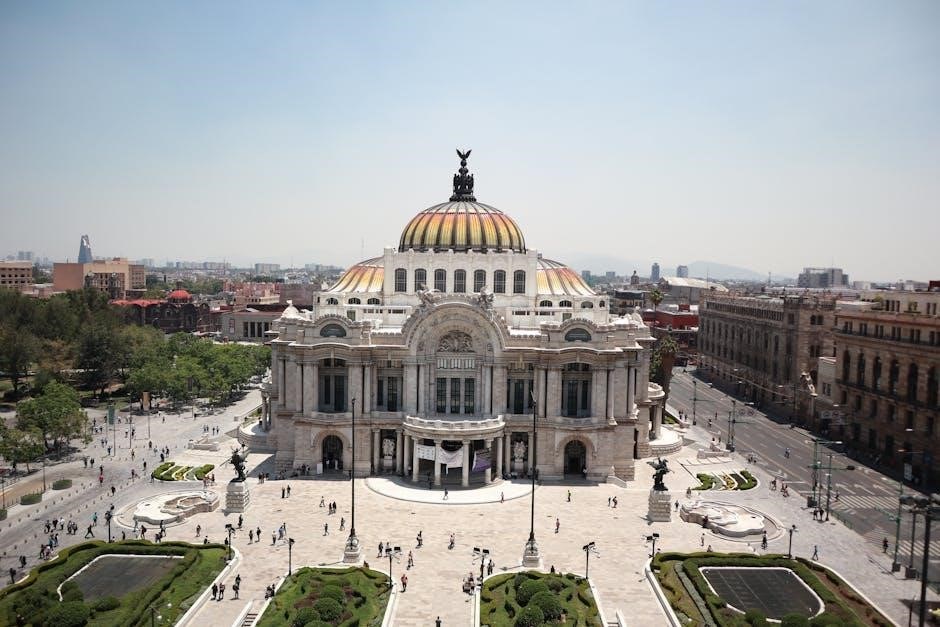
Planning Your Self-Guided Tour
Plan your Miami Art Deco self-guided tour by downloading detailed maps and apps for navigation․ Explore at your own pace, bringing essentials like water, sunscreen, and a camera․
Best Time to Explore the Art Deco District
The ideal time to explore Miami Beach’s Art Deco District is early morning or late afternoon for optimal lighting and cooler temperatures․ Early risers can enjoy serene streets and perfect photo opportunities, while late afternoon offers a golden glow․ For a unique experience, visit at dusk to see the buildings illuminated with vibrant neon lights․ Avoid the midday heat, especially during summer, and consider visiting during the cooler winter months for a more comfortable stroll․ Whether you’re a morning person or prefer evenings, the District’s charm shines at any hour․
Essential Items to Bring Along
For a seamless self-guided Art Deco walking tour, bring a mobile device with the downloaded map and app for navigation․ Wear comfortable walking shoes, sunscreen, and a hat to protect against the sun․ Carry a reusable water bottle to stay hydrated and a portable charger for your phone․ A camera or smartphone with a good camera is a must for capturing stunning photos․ Optionally, bring a physical map as a backup and light snacks for energy․ These items ensure you’re prepared to fully enjoy the tour․
Downloading the Detailed Walk Route Map
Download the detailed walk route map for the Miami Art Deco District to navigate effortlessly during your self-guided tour․ Available on mobile devices, this map provides turn-by-turn directions, ensuring you don’t miss any iconic buildings․ Simply access the map via the UCPlaces app or similar platforms offering Art Deco tours․ The map is free and includes numbered locations corresponding to key Art Deco structures, allowing you to explore at your own pace without missing hidden gems or significant landmarks․ This tool is essential for a smooth and enjoyable experience․
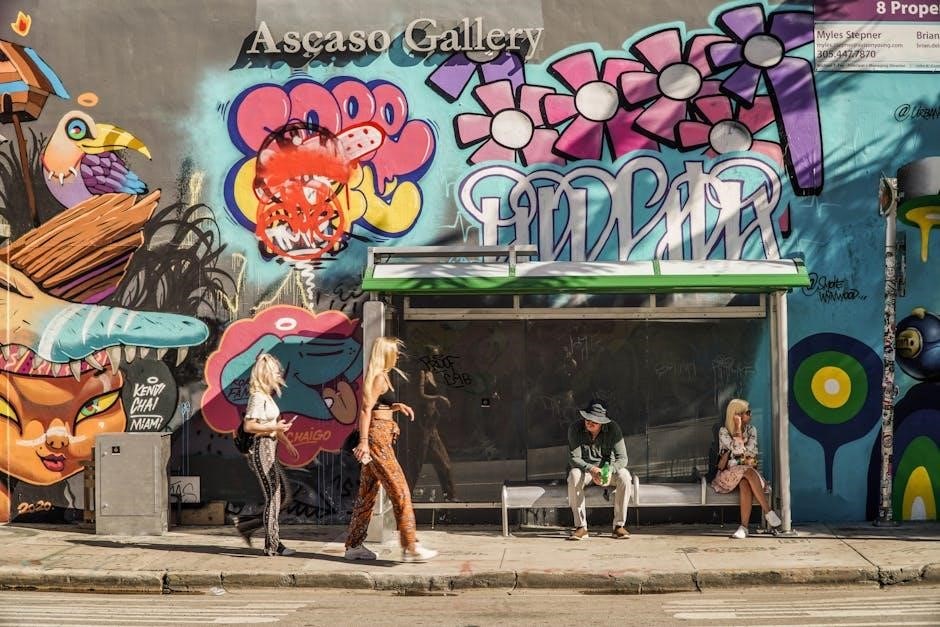
Key Stops on the Miami Art Deco Walking Tour
Explore iconic buildings like The Sagamore Hotel, National Hotel, and Loews Miami Beach Hotel․ These must-see stops showcase the district’s vibrant architectural style and historical charm․
Must-See Buildings and Their Significance
The Sagamore Hotel, National Hotel, and Loews Miami Beach Hotel are iconic stops on the tour․ These buildings exemplify the Art Deco style, featuring neon lights, ornate details, and symmetrical facades; The Sagamore Hotel, known for its retro elegance, offers a glimpse into Miami’s golden era․ The National Hotel, with its long pool and preserved interior, highlights the district’s architectural preservation efforts․ Loews Miami Beach Hotel stands out with its vibrant exterior and historic charm․ These landmarks are must-visits, showcasing the district’s cultural and architectural legacy․
Hidden Gems and Lesser-Known Art Deco Structures
Beyond the iconic hotels, Miami’s Art Deco District hides lesser-known treasures․ Explore smaller apartment buildings like the Econo Lodge or the Tides South Beach, featuring intricate details and nautical themes․ Discover the Carlyle Hotel’s curved façade and the Essex House’s geometric patterns․ These structures, often overlooked, offer unique insights into the era’s design diversity․ Venture off the main streets to uncover these gems, each telling a story of Miami’s architectural evolution․ Use your map to locate these tucked-away spots for a deeper appreciation of Art Deco’s influence․
Practical Tips for Navigating the Tour
Use the app-based guide for GPS navigation and follow the downloadable map․ Start at The Sagamore Hotel and set your own pace for a seamless experience․
Using the App-Based Self-Guided Tour
Enhance your Miami Art Deco experience with a user-friendly app featuring GPS navigation, turn-by-turn directions, and detailed insights into each landmark․ Download the map beforehand to ensure seamless exploration․ The app provides historical context, architectural highlights, and fun facts about the buildings․ Use the audio clips to deepen your understanding of the Art Deco style and its significance in Miami Beach․ Pause or replay sections as needed, allowing you to explore at your own pace․ Don’t forget to bring headphones for an immersive experience․
Setting Your Own Pace and Itinerary
One of the joys of a self-guided tour is the freedom to set your own pace․ Whether you’re an early riser or prefer a leisurely afternoon stroll, you can explore Miami’s Art Deco District at a time that suits you․ Plan your itinerary according to your interests, lingering at iconic buildings or taking breaks at charming cafes․ With no fixed schedule, you can absorb the vibrant atmosphere and architectural details without feeling rushed․ This flexibility makes the experience truly personal and enjoyable, allowing you to soak in the beauty of Miami’s Art Deco heritage at your own leisure․
Extending Your Tour Beyond Art Deco
After exploring the Art Deco District, venture beyond to discover South Beach’s vibrant culture․ Stroll along Ocean Drive, visit Lummus Park, or enjoy dining at nearby culinary hotspots, blending history with modern charm․
Exploring Nearby Attractions in South Beach
After absorbing the Art Deco charm, explore South Beach’s vibrant attractions․ Stroll along Ocean Drive, visit Lummus Park for its scenic views, or wander through Lincoln Road Mall for shopping and dining․ Espanola Way offers a quaint European-inspired vibe, while the South Beach Boardwalk is perfect for a leisurely walk or bike ride․ These nearby spots blend seamlessly with the Art Deco experience, offering a mix of culture, relaxation, and entertainment in one of Miami’s most iconic neighborhoods․
Recommended Dining and Shopping Spots
After exploring the Art Deco District, indulge in South Beach’s renowned dining and shopping scene․ Ocean Drive offers iconic restaurants like The Front Porch Cafe and The Bazaar by José Andrés․ Lincoln Road Mall is a must-visit for boutique shopping and al fresco dining․ The Sagamore Hotel’s beachfront restaurant is another highlight, blending art deco elegance with culinary delights․ These spots seamlessly complement the tour, offering a mix of local culture, gourmet cuisine, and unique retail experiences that enhance your Miami Art Deco adventure․
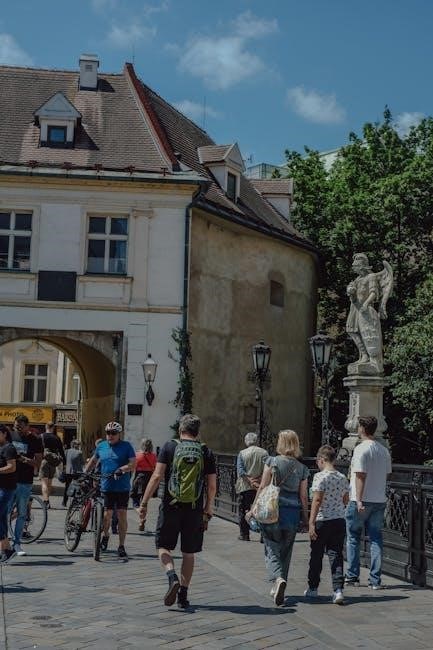
Interactive Elements of the Tour
Engage with Miami’s Art Deco history through interactive apps, photography hotspots, and social media-worthy moments․ Capture iconic buildings and share your journey online for a memorable experience․
Engaging with the Architectural History
Immerse yourself in Miami’s Art Deco heritage by engaging with its architectural history․ Use interactive apps and detailed maps to uncover the stories behind iconic buildings․ Learn about the design elements, such as neon lights, geometric patterns, and tropical motifs, that define the Art Deco style․ Explore the preservation efforts that have maintained these structures for decades․ Capture the essence of the era through photography and delve into the historical context that shaped this vibrant neighborhood․ This interactive approach enhances your connection to Miami’s architectural legacy․
Photography Opportunities and Social Media Tips
Miami’s Art Deco District offers endless photography opportunities, with its vibrant pastel colors, geometric patterns, and retro neon lights․ Capture iconic buildings like the Sagamore Hotel and the National Hotel․ For the best shots, visit during the golden hour or early morning when the light is soft․ Share your photos on social media using hashtags like #ArtDecoMiami or #MiamiBeach․ Tag locations to connect with fellow travelers and inspire others․ Don’t forget to post your favorite moments and tips for fellow explorers!
Reflecting on your self-guided Miami Art Deco walking tour, you’ll have experienced a unique blend of architectural beauty and cultural history․ Share your adventures and inspire others to explore this iconic district!
Reflecting on the Experience

Your self-guided Miami Art Deco walking tour is a memorable journey through a cultural gem․ As you explore the vibrant buildings and historic charm, you’ll gain a deeper appreciation for the district’s architectural legacy․ Whether you’re an enthusiast of retro design or simply a curious traveler, this tour offers a unique perspective on Miami Beach’s iconic style․ The flexibility to set your own pace allows for a personalized adventure, making the experience even more rewarding․ Reflecting on the beauty and history you’ve encountered, you’ll leave with unforgettable memories of this artistic treasure․
Encouragement to Share Your Tour Adventures
After completing your self-guided Miami Art Deco walking tour, share your adventures with others! Capture stunning photos of the iconic buildings and post them on social media using hashtags like #MiamiArtDeco or #ArtDecoDistrict․ Your experiences and insights can inspire fellow travelers to explore this vibrant cultural gem․ Whether it’s a blog post, a video, or a simple update, your story can highlight the beauty and history of Miami Beach’s Art Deco architecture, encouraging others to embark on their own journey of discovery․
